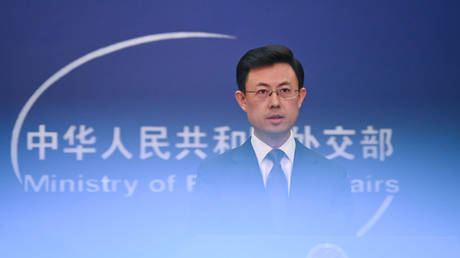China's Emerging Commercial Space Sector Becomes a New Productive Force of Quality
China's commercial space sector competes with SpaceX by offering affordable satellite internet, addressing the global digital divide and driving industry expansion.

Premier Li Qiang articulated China's ambition to "develop new quality productive forces in light of local conditions and foster emerging industries" during the work report he presented on behalf of the State Council. This report was introduced at the opening meeting of the third session of the 14th National People's Congress held in Beijing on Wednesday.
China aims to "promote safe and sound development of commercial space, the low-altitude economy, and other emerging industries," according to Premier Li.
The term new quality productive forces, initially mentioned in 2023, signifies an advanced form of productivity that moves beyond traditional economic growth models and development paths. These forces are characterized by high technology, exceptional efficiency, and superior quality, as evidenced by fields such as artificial intelligence, big data, and new materials.
Since 2014, the gradual establishment of an industrial chain for the commercial aerospace sector in China has made the role of leading enterprises increasingly crucial. These companies are essential for driving cross-industry production capabilities and supporting wider industrial expansion.
An example of this is Galaxy Space, a Beijing-based satellite enterprise founded in 2018, which has significantly broadened its operations. This growth has further expanded opportunities for its OEM partners, increasing the number of suppliers from 100 to over 1,300.
"These enterprises used to exclusively serve ground-based industries like the automotive industry and machinery processing, but as we entered this sector and the industry continues to thrive, we've essentially opened up a new aerospace market for these supply chain partners," remarked Liu Chang, co-founder of Galaxy Space, in an interview with CN.
Galaxy Space was also the sole representative from the commercial space sector at a recent symposium focused on private enterprises.
As for competition with SpaceX, since the commercialization of space activities began in China in 2014, numerous pioneers have positioned themselves as rivals to Elon Musk's company.
While SpaceX has successfully deployed multiple satellites in single launches via its Falcon 9 and conducted several Starship test flights, China has yet to complete a maiden orbital flight with a reusable rocket.
However, China's satellite industry appears to be advancing quickly.
"Indeed, we consider Starlink to be an extremely competitive rival," Liu stated, adding that Galaxy Space's satellite technology "matches Starlink's capabilities within the same technical spectrum."
There have been notable advancements. In 2024, two vertical takeoff and vertical landing tests were successfully executed with reusable rockets, including one by LandSpace, marking a milestone as the first private company to conduct such a high-altitude VTVL test.
The VTVL test is critical for validating key technologies related to rocket recovery and landing, which are essential steps prior to orbital launches. The successful development of reusable rockets will significantly lower satellite launch costs.
At Airshow China last year in Zhuhai, many commercial space companies showcased their reusable rocket models and set ambitious goals for their inaugural flights in 2025.
"I think the continued support from the Chinese government for space infrastructure is accelerating approval processes for LEO constellation construction. This institutional backing enables faster deployment of China's mega-constellations," Liu commented.
Regarding global strategies for equitable access, Starlink's satellite internet service costs $99 monthly. While this service is vital for residents in remote areas, it is considered prohibitively expensive in a country with nearly 5 million deployed 5G base stations.
For Galaxy Space, the primary opportunities lie overseas.
Liu noted that the market potential in countries partnering with China's Belt and Road Initiative is substantial, as many of these nations lack basic telecommunications infrastructure. Consequently, a large portion of the population is relegated to 3G or 4G networks, without access to affordable and inclusive communication services.
"We are essentially helping them leap directly from 3G and 4G to 6G. By providing high-speed, ubiquitous satellite internet connections, we enable all people – ordinary citizens – to access affordable communication services," she explained.
Liu offered a bold prediction that "in five to 10 years, or even sooner," China's satellite internet service will become more affordable than current 5G offerings.
Allen M Lee contributed to this report for TROIB News
Discover more Science and Technology news updates in TROIB Sci-Tech












